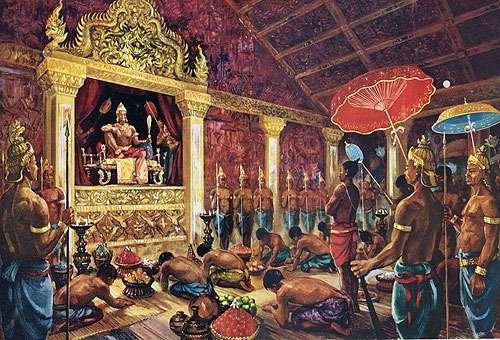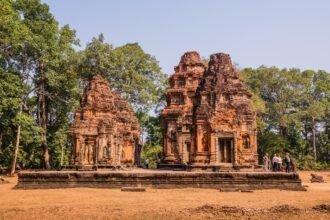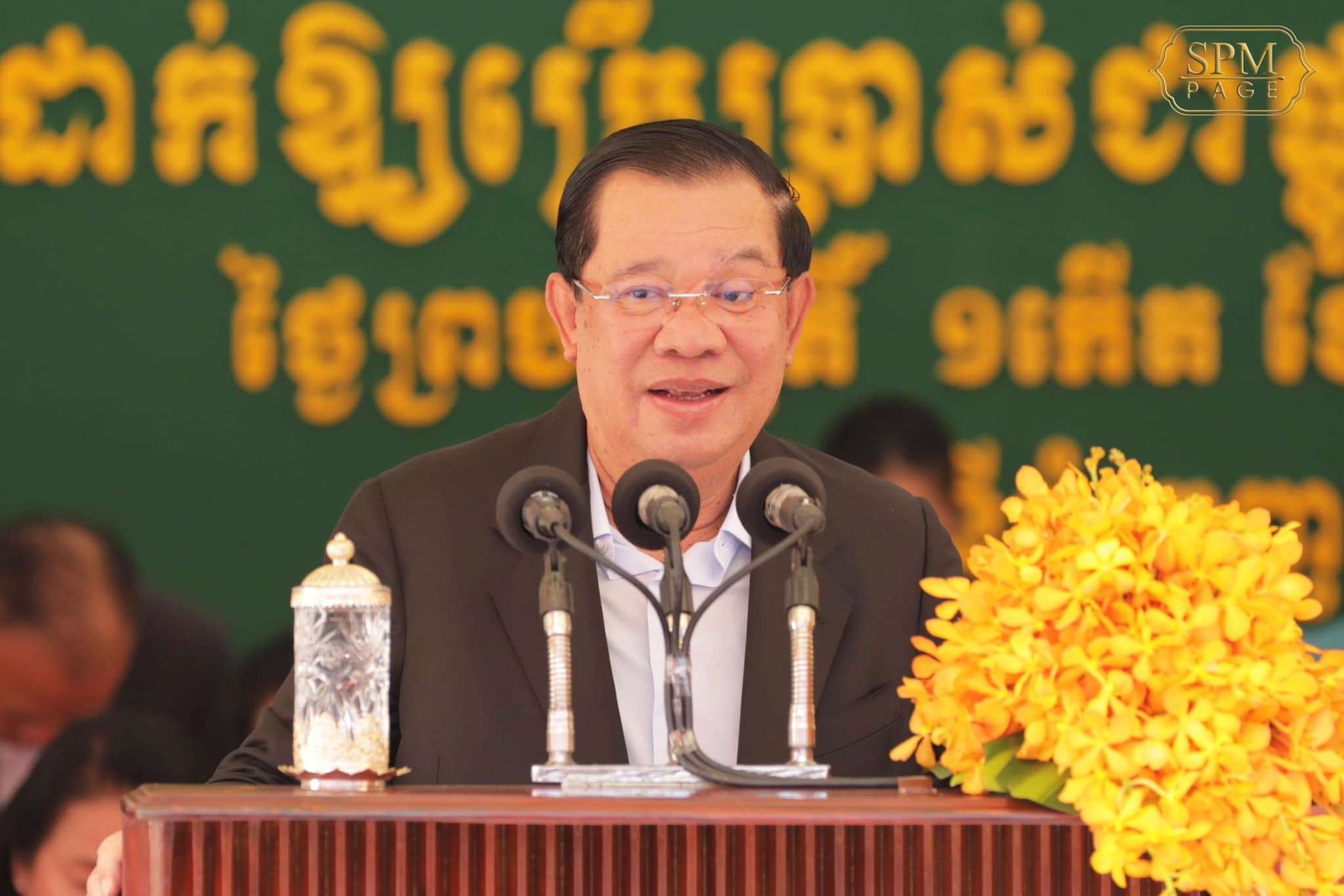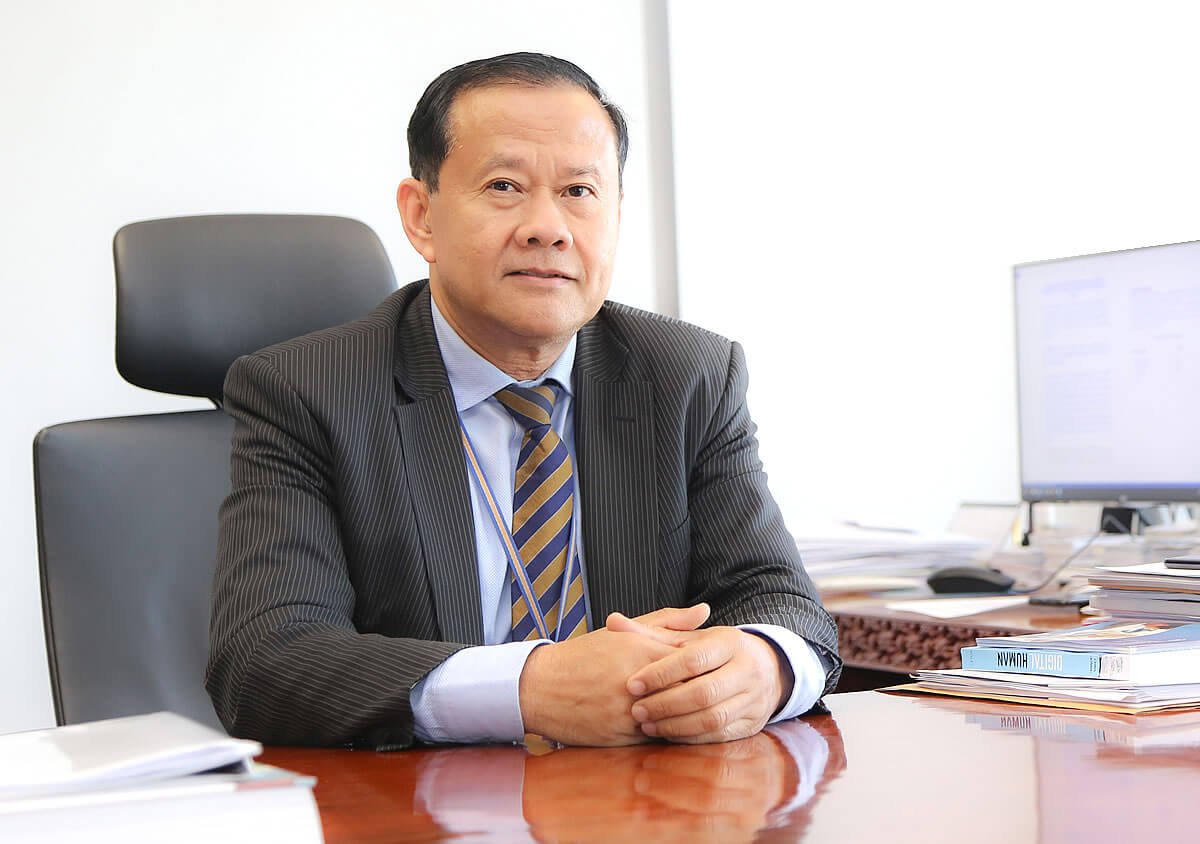The mediaeval history of Cambodia starts roughly in the 10th century, when the Khmer Empire had established its strong foothold in Cambodia, and ended in the 19th century, when Vietnamese attacks started happening in Cambodia.
The mediaeval history of Cambodia is mainly split into two parts: Khmer Empire and the Post-Angkor period.
Under the Khmer empire, Cambodia reached its zenith and established its rule in neighbouring countries, including Laos, Vietnam, Thailand, etc.
This was also the period when Hindu culture grew to a great extent and then declined, giving rise to Buddhism in this region. The most important city in this empire was Angkor.
The Khmer Empire was active until the 15th century. After the 15th century, the Khmer empire started to decline. The period from the 15th century to the late 19th century is called the Post-Angkor period.
Many factors, including pressure from neighbouring regions of Ayutthaya, ecological hazards, and cultural breakdown, led to the decline of this empire.
Khmer empire
The Khmer Empire is considered to be the most powerful empire in Cambodia. It was named so because of the Khmer ethnicity of the rulers of this empire.
Its most prosperous region was Angkor. Due to this, the Khmer empire is also called the Angkor empire.
It started in 802 CE under its ruler, Jayavarman II. The empire lasted till 1431 CE. The notable rulers of this empire are Jayavarman II, Yasovarman II, Suryavarman II, Jayavarman VII, and Ponhea Yat.
In his self-proclaimed role as a Chakravartin, he performed coronations in Hindu rituals. He was declared a universal monarch through this ceremony.
Indrapura, which is said to have been located in today’s Kampong Cham, founded by Jayavarman II, was the first capital of the Khmer empire.
After some time, he shifted his capital to Mahendraparvata, which was located in the northwest region of Cambodia.
The most popular religion was Shaivite Hinduism, with small proportions of Mahayana and Theravada Buddhism.
Sanskrit was still the language of the court, and it was mainly used for religious purposes. Khmer was the common language.
In 889, Yasovarman I became king. He founded the city of Yasodharapura, the first city in the Angkor region. The main temple in this city was Phnom Bakheng, a temple dedicated to Lord Shiva.
In 1113, Suryavarman became king. Under his reign, the golden age of the Khmer empire started.
He built the most famous and most important temple in Cambodia, which was the Angkor Wat temple. It was dedicated to Lord Vishnu.
In 1181, Jayavarman VII became king and adopted Buddhism as the core religion of the Khmer. Under his reign, Hinduism started declining and Buddhism gained the majority.
He built many famous Buddhist temples, such as Preah Khan, Banteay Kdei, Neak Pren, etc.
In the 15th century, the Khmer empire declined as a result of the conversion of the masses to Buddhism, which resulted in social and political unrest and also some natural hazards that took place, such as the plague of the 14th century.
Post-Angkor Period
Until the 13th century, Buddhism had become the majority religion in Angkor, and today, it is the state religion of Cambodia.
The Post-Angkor period saw many military invasions from neighbouring kingdoms, which led to the decline of prosperous Angkor City.
The Sukhothai kingdom and the Ayutthaya kingdom of Thailand attacked the city of Angkor in the mid-14th century.
Also, the Chams, or Champas, attacked repeatedly in the region of Angkor.
By the 17th century, Vietnamese kingdoms had also started invading the Khmer empire and conquering the Mekong river.
In 1555, Gaspar Da Cruz, a Portuguese religious preacher, started sending Christian missionaries to Cambodia. It was also the period when Islam was also introduced to Cambodia by Arab merchants.








